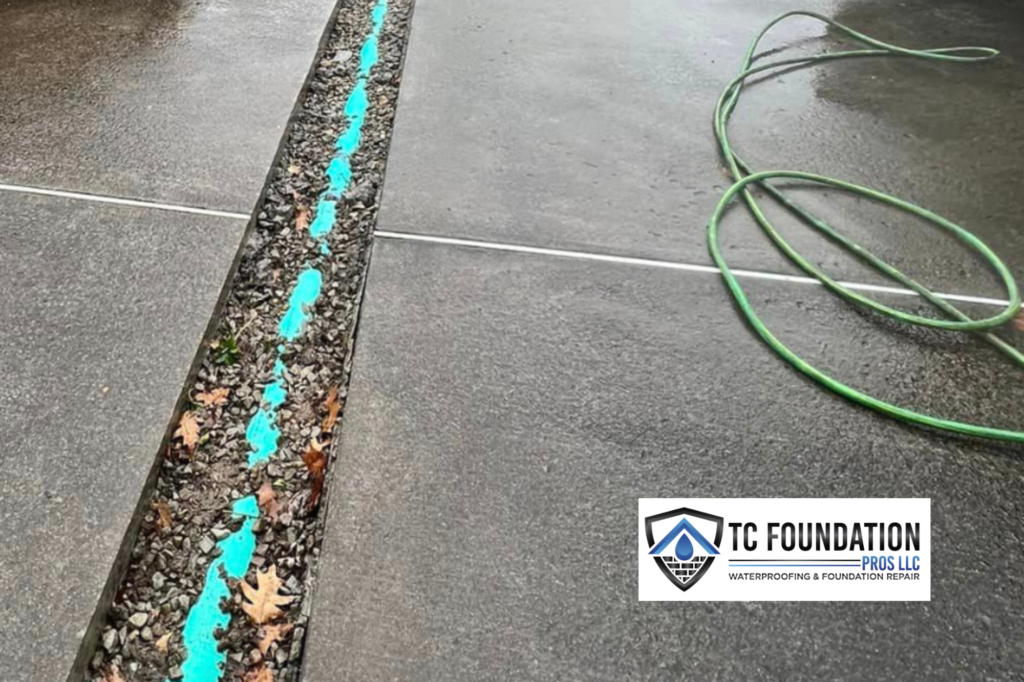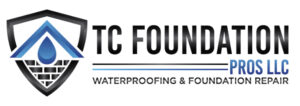You’re probably dealing with foundation issues if you notice cracks in walls, uneven floors, or sticking doors. Observe the type and location of wall cracks; horizontal ones suggest external pressure, while diagonal ones may indicate settlement problems. Uneven floors can result from soil movement and signal compromised foundation integrity; a level can help identify these deviations. Sticking doors and gaps around windows often imply shifts in the foundation that misalign frames. Water pooling in your basement might raise hydrostatic pressure, leading to further issues. Identifying these signs early could prevent extensive damage and related structural concerns. Additional insights await.
Key Takeaways
- Cracks in walls, especially horizontal or diagonal, suggest potential foundation issues.
- Uneven floors can indicate significant foundation shifts and should be evaluated professionally.
- Sticking doors may signal misalignment due to foundation movement and pressure.
- Gaps around windows suggest possible foundation misalignment and soil movement.
- Water in the basement increases pressure on foundations, necessitating drainage and waterproofing solutions.
Cracks in Walls
Cracks in walls can serve as early indicators of underlying foundation problems, making it essential to address them promptly. If you notice these cracks, it’s a clear sign that your home’s structural integrity may be compromised. Seeking Pittsburgh foundation repair services is crucial, as professionals can assess the severity and recommend appropriate solutions. Cracks can appear in various forms, such as horizontal, vertical, or diagonal, each potentially pointing to different issues. Ignoring these warning signs could lead to more extensive and costly repairs, so acting quickly is key to preserving your home’s stability.
Horizontal cracks often suggest pressure against basement walls, while diagonal ones can indicate differential settlement. These are critical signs of foundation problems that shouldn’t be ignored.
You should also pay attention to the location and size of the cracks. Hairline cracks might be less concerning, whereas wider ones could be foundation repair warning signs. Consistent monitoring of crack progression is vital. If cracks continue to widen or new ones appear, it’s time to take into account professional evaluation.
Additionally, inspect for cracks around windows and door frames. These areas often show early signs of foundation stress. If doors and windows become difficult to open or close, this can further corroborate foundation instability.
Addressing these issues promptly can prevent more severe damage and costly repairs. By staying vigilant, you guarantee the safety and value of your home, protecting your investment from escalating foundation issues.
Uneven Floors
One of the most noticeable indicators of underlying foundation problems is uneven floors. When you walk across your home and notice sloping or dipping areas, it’s often a sign that the foundation’s integrity has been compromised.
Uneven floors can result from soil movement beneath your home, a common issue in areas prone to expansive clay, such as Pittsburgh. This movement can cause the foundation to shift, leading to significant home foundation issues that require immediate attention.
To diagnose the problem, use a level to check for floor irregularities. If you find significant deviations, it’s time to evaluate professional intervention.
Pittsburgh foundation repair specialists can conduct a thorough inspection to determine the extent of the damage and recommend appropriate solutions. Ignoring uneven floors may lead to further structural issues, compromising your home’s safety and value.
Addressing these issues early can prevent more extensive damage and costly repairs. In some cases, solutions may include underpinning, mudjacking, or installing piers to stabilize the foundation.
If you notice signs of home foundation issues, don’t wait for the problem to escalate. Contact a professional to assess and address your foundation concerns effectively.
Sticking Doors
When doors in your home start sticking or become difficult to open and close, it often signals potential foundation problems. This issue arises as the foundation shifts, causing misalignment in door frames. The pressure from uneven settling can warp the frame, resulting in friction that prevents smooth operation. You might notice that the door scrapes against the floor or jams in the frame, indicating that the structure beneath isn’t stable.
To analyze this problem, inspect the door frame for gaps or unusual angles. Use a level tool to determine if the frame is plumb; even a slight tilt can lead to sticking. Pay attention to doors on the home’s lower levels, as they directly relate to foundational changes.
Also, check for cracks extending from the door frame into adjacent walls, as these often accompany sticking doors and provide further evidence of foundation movement.
Addressing sticking doors promptly is vital. Ignoring this sign can lead to further structural damage, escalating repair costs. Consider consulting a foundation specialist if multiple doors exhibit similar issues or if the problem continues to worsen.
Early intervention can prevent more severe and costly repairs down the road.
Gaps Around Windows
As you examine your home for potential issues, gaps around windows can be a clear indicator of foundation problems.
These gaps often result from the shifting or settling of your home’s foundation, causing misalignment of the window frames. When the soil beneath your foundation expands, contracts, or erodes, it can exert pressure on the structure, leading to these noticeable separations. You may also notice windows that are difficult to open or close, further signaling underlying foundation movement.
To assess the severity of these gaps, measure the width at various points around each window. If you notice consistent or widening gaps, it could indicate ongoing structural shifts, signaling the need for foundation repair Pittsburgh services. Additionally, inspect for any accompanying cracks in the surrounding wall material, as these can reveal stress points where the structure is adjusting to the foundation’s movement. Addressing these signs early with professional repair can prevent further damage and maintain your home’s stability.
Rectifying foundation issues early can prevent further damage to your home’s structural integrity.
Consider consulting a foundation repair specialist if you observe these gaps. Their expertise can help determine the cause of the settlement and recommend appropriate solutions, such as underpinning or soil stabilization, to restore your home’s stability and prevent future issues.
Water in Basement
If you’ve noticed water pooling in your basement, it’s vital to address the issue promptly to protect your home’s foundation. Water infiltration can lead to serious structural problems, as it increases hydrostatic pressure around the foundation, potentially causing walls to bow or crack.
Evaluating the source of water is important. Check for plumbing leaks, inadequate drainage systems, or cracks in the basement walls or floor.
Begin by inspecting your basement’s perimeter for any visible signs of moisture or dampness. Look for water stains, peeling paint, or efflorescence—a white, powdery residue left by evaporated water. These indicators suggest water ingress points.
Confirm your gutters and downspouts are functioning correctly, directing water at least five feet away from the foundation. Poor drainage can exacerbate water accumulation issues.
Consider installing a sump pump if your basement is prone to flooding. A sump pump channels water away from the foundation, reducing pressure and preventing water buildup.
Additionally, interior and exterior waterproofing measures can provide further protection. Addressing water issues in your basement not only safeguards your foundation but also prevents mold growth and improves indoor air quality.

Exterior Cracks
Having addressed water issues in the basement, now consider the significance of exterior cracks as a key indicator of foundation problems.
Exterior cracks, often found in brickwork or concrete, can reveal much about your home’s structural integrity. If you notice horizontal cracks, it could indicate severe foundation movement due to soil pressure, which may require foundation repair Pittsburgh PA services. Vertical or diagonal cracks might suggest settling, but they shouldn’t be ignored—especially if they widen over time. Paying close attention to the size, direction, and location of these cracks is crucial for identifying potential foundation issues early on and preventing costly repairs.
Inspect your home’s corners and areas around windows and doors where cracks commonly appear. Gaps around window frames or garage doors can signify shifts in the foundation, affecting your home’s alignment.
Chimneys that tilt or separate from the house are also significant red flags, highlighting potential structural issues.
It’s essential to monitor these changes closely, as they can worsen, leading to costly repairs. If exterior cracks persist or expand, it’s time to consult a foundation repair specialist.
Early detection and intervention can prevent further damage, safeguarding your home’s value and safety. Don’t delay in addressing these warning signs to maintain structural stability.
In Conclusion
TC Foundation Pros LLC has equipped you with the knowledge to recognize key warning signs of foundation problems: wall cracks, uneven floors, sticking doors, gaps around windows, water in the basement, and exterior cracks. These aren’t just inconveniences—they’re indicators of potential structural issues. Addressing them promptly is essential to maintaining your home’s integrity and value. Don’t wait for small problems to escalate. When you spot these signs, act quickly and consult a professional to guarantee your home’s safety and longevity.
